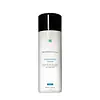What's inside
What's inside
 Key Ingredients
Key Ingredients

 Benefits
Benefits

 Concerns
Concerns

 Ingredients Side-by-side
Ingredients Side-by-side

Water
Skin ConditioningAloe Barbadensis Extract
Skin ConditioningVaccinium Myrtillus Bud Extract
AntioxidantHamamelis Virginiana Extract
AntiseborrhoeicPhenoxyethanol
PreservativeIsoceteth-20
EmulsifyingSaccharum Officinarum Extract
MoisturisingPropylene Glycol
HumectantMethylparaben
PreservativePvp
Emulsion StabilisingChlorphenesin
AntimicrobialCitrus Aurantium Dulcis Fruit Extract
MaskingCitrus Medica Limonum Peel Extract
EmollientGlycerin
HumectantBenzoic Acid
MaskingAcer Saccharum Extract
Skin ConditioningChamomilla Recutita Flower Extract
MaskingRosmarinus Officinalis Extract
AntimicrobialThymus Vulgaris Extract
PerfumingCitrus Aurantium Dulcis Oil
MaskingWater, Aloe Barbadensis Extract, Vaccinium Myrtillus Bud Extract, Hamamelis Virginiana Extract, Phenoxyethanol, Isoceteth-20, Saccharum Officinarum Extract, Propylene Glycol, Methylparaben, Pvp, Chlorphenesin, Citrus Aurantium Dulcis Fruit Extract, Citrus Medica Limonum Peel Extract, Glycerin, Benzoic Acid, Acer Saccharum Extract, Chamomilla Recutita Flower Extract, Rosmarinus Officinalis Extract, Thymus Vulgaris Extract, Citrus Aurantium Dulcis Oil
Water
Skin ConditioningButylene Glycol
HumectantGlycerin
HumectantSodium Hyaluronate
HumectantCeramide NP
Skin ConditioningHydrolyzed Conchiolin Protein
Skin ConditioningHydrolyzed Egg Shell Membrane
HumectantHydrolyzed Prunus Domestica
Skin ConditioningPueraria Lobata Root Extract
HumectantAloe Barbadensis Leaf Extract
EmollientChlorella Vulgaris Extract
Skin ConditioningArbutin
AntioxidantPCA
HumectantSodium PCA
HumectantSodium Lactate
BufferingArginine
MaskingAspartic Acid
MaskingGlycine
BufferingAlanine
MaskingSerine
MaskingValine
MaskingProline
Skin ConditioningThreonine
Isoleucine
Skin ConditioningHistidine
HumectantPhenylalanine
MaskingLysine Hcl
Skin ConditioningSodium Glutamate
MaskingDipotassium Glycyrrhizate
HumectantTocopheryl Acetate
AntioxidantPentylene Glycol
Skin ConditioningMalic Acid
BufferingCalcium Chloride
AstringentCalcium Acetate
MaskingPotassium Chloride
Zinc Chloride
AntimicrobialSodium Chloride
MaskingMagnesium Chloride
Platinum Powder
AbrasivePEG-75
HumectantBetaine
HumectantHydroxyethylcellulose
Emulsion StabilisingAlgin
MaskingPEG-60 Hydrogenated Castor Oil
EmulsifyingPhenoxyethanol
PreservativeTitanium Dioxide
Cosmetic ColorantMica
Cosmetic ColorantWater, Butylene Glycol, Glycerin, Sodium Hyaluronate, Ceramide NP, Hydrolyzed Conchiolin Protein, Hydrolyzed Egg Shell Membrane, Hydrolyzed Prunus Domestica, Pueraria Lobata Root Extract, Aloe Barbadensis Leaf Extract, Chlorella Vulgaris Extract, Arbutin, PCA, Sodium PCA, Sodium Lactate, Arginine, Aspartic Acid, Glycine, Alanine, Serine, Valine, Proline, Threonine, Isoleucine, Histidine, Phenylalanine, Lysine Hcl, Sodium Glutamate, Dipotassium Glycyrrhizate, Tocopheryl Acetate, Pentylene Glycol, Malic Acid, Calcium Chloride, Calcium Acetate, Potassium Chloride, Zinc Chloride, Sodium Chloride, Magnesium Chloride, Platinum Powder, PEG-75, Betaine, Hydroxyethylcellulose, Algin, PEG-60 Hydrogenated Castor Oil, Phenoxyethanol, Titanium Dioxide, Mica
Ingredients Explained
These ingredients are found in both products.
Ingredients higher up in an ingredient list are typically present in a larger amount.
Glycerin is already naturally found in your skin. It helps moisturize and protect your skin.
A study from 2016 found glycerin to be more effective as a humectant than AHAs and hyaluronic acid.
As a humectant, it helps the skin stay hydrated by pulling moisture to your skin. The low molecular weight of glycerin allows it to pull moisture into the deeper layers of your skin.
Hydrated skin improves your skin barrier; Your skin barrier helps protect against irritants and bacteria.
Glycerin has also been found to have antimicrobial and antiviral properties. Due to these properties, glycerin is often used in wound and burn treatments.
In cosmetics, glycerin is usually derived from plants such as soybean or palm. However, it can also be sourced from animals, such as tallow or animal fat.
This ingredient is organic, colorless, odorless, and non-toxic.
Glycerin is the name for this ingredient in American English. British English uses Glycerol/Glycerine.
Learn more about GlycerinPhenoxyethanol is a preservative that has germicide, antimicrobial, and aromatic properties. Studies show that phenoxyethanol can prevent microbial growth. By itself, it has a scent that is similar to that of a rose.
It's often used in formulations along with Caprylyl Glycol to preserve the shelf life of products.
Water. It's the most common cosmetic ingredient of all. You'll usually see it at the top of ingredient lists, meaning that it makes up the largest part of the product.
So why is it so popular? Water most often acts as a solvent - this means that it helps dissolve other ingredients into the formulation.
You'll also recognize water as that liquid we all need to stay alive. If you see this, drink a glass of water. Stay hydrated!
Learn more about Water